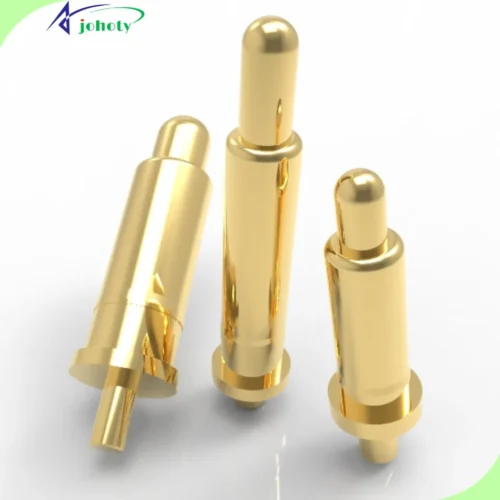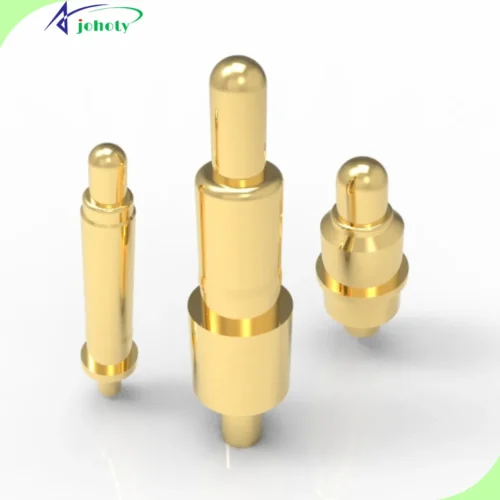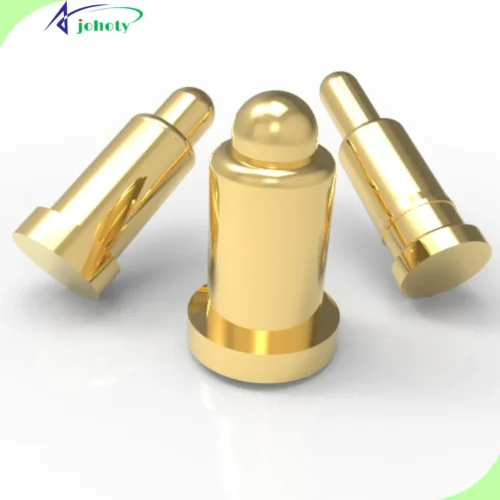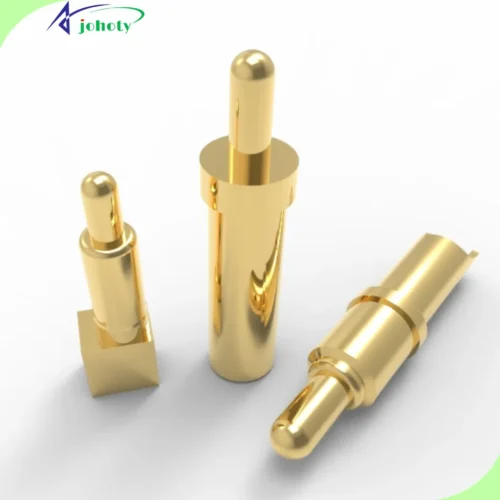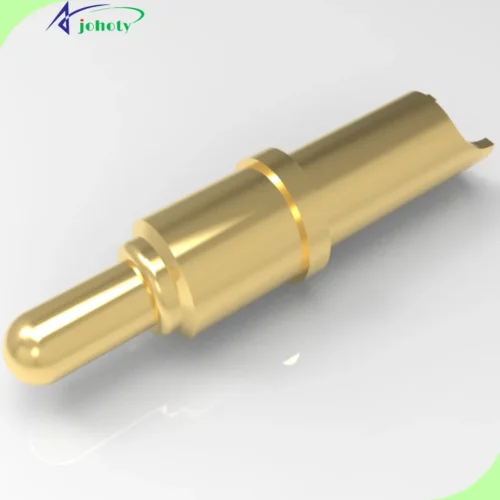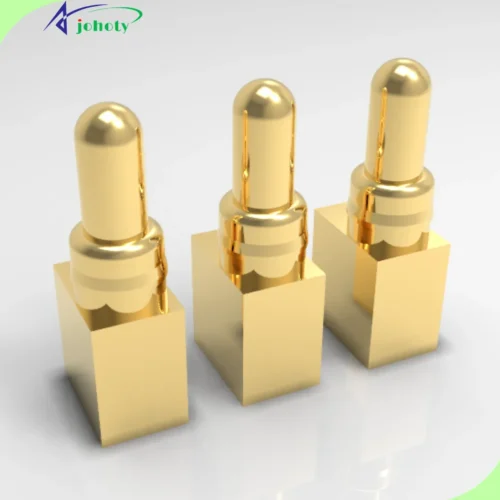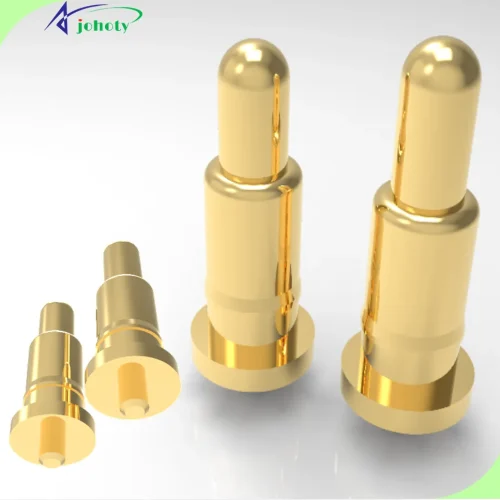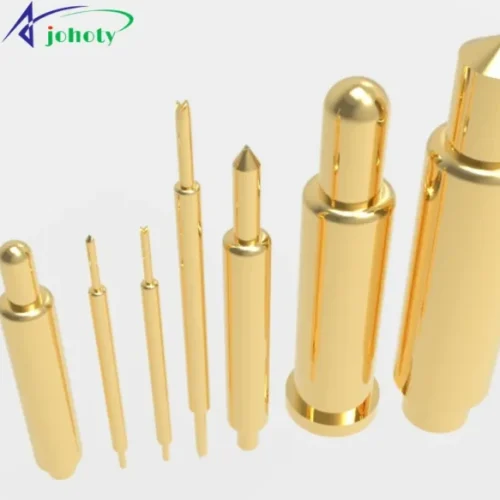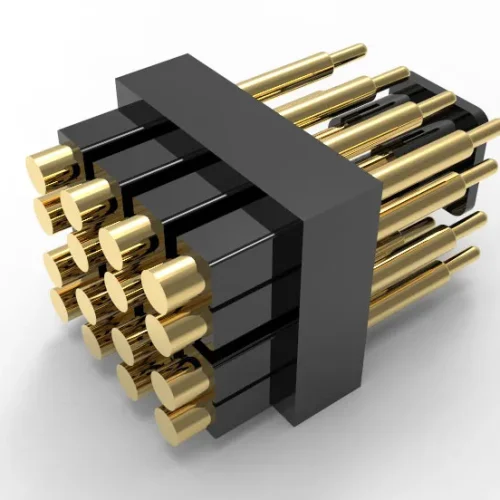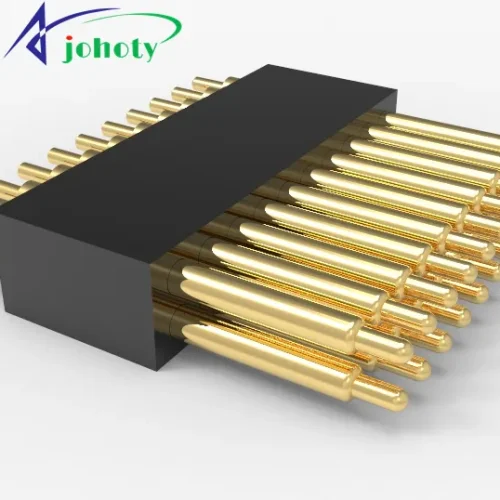Stamped parts and Pogo Pins are crucial for optimizing healthcare devices. Learn about precision manufacturing, real-world applications, and future trends to stay updated on the latest technology. Valuable for medical device engineers, driving innovation and progress in healthcare equipment.
Stamped parts and Pogo Pins are key components that significantly enhance healthcare equipment accuracy and stability. In healthcare devices, performance and reliability are crucial. This article investigates their utilization in medical devices, stressing their critical role in ensuring optimal functionality.
Stamped Parts: The Foundation of Precision Manufacturing
- Stamped parts, made using high-precision molds and stamping processes, are widely used in medical equipment. Material selection through production is rigorously overseen to maintain the utmost accuracy and stability.
- We’ll show how stamped parts improve surgical instruments and diagnostic devices.
Pogo Pins: Ensuring Reliable Connections
- Pogo Pins, known for high conductivity and durability, are essential for reliable electrical connections in medical devices. Their manufacturing involves precise machining and stringent quality checks to ensure stable application across various devices.
- We’ll analyze the critical role of Pogo Pins in portable healthcare devices through examples.
Integrated Application: Synergistic Effects
- The combined use of stamped parts and Pogo Pins offers significant synergistic effects, enhancing the overall performance of healthcare devices.
- We’ll detail case studies of this integration in advanced medical monitoring equipment, demonstrating improved stability and longevity.
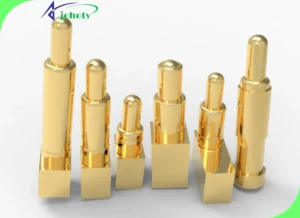
Introduction: Stamped Parts and Pogo Pins Ensure Optimal Healthcare Devices
Background:
- In today’s rapidly advancing healthcare industry, the performance and reliability of healthcare devices are critical factors determining their success. With ongoing technological advancements, the complexity and precision requirements of medical equipment continue to rise.
- To meet these stringent demands, engineers rely on high-quality components to ensure optimal device performance. Among these, stamped parts and Pogo Pins play pivotal roles as core components.
- Stamped parts are widely used in various medical devices due to their outstanding precision and stability. From surgical instruments to diagnostic equipment, all rely on their robustness and reliability.
- Meanwhile, Pogo Pins, with high conductivity and durability, are crucial elements in ensuring the reliability of electrical connections in medical devices. Mastering their application and manufacturing processes is crucial for optimizing medical equipment performance.
Theme Statement:
- We delve into the critical roles of stamped parts and Pogo Pins in optimizing healthcare devices Detailing the definitions, manufacturing processes, and practical applications of these components in medical devices. We reveal how they ensure efficient operation and precision.
- Additionally, we will explore future technological trends, analyzing how new materials and processes can further drive advancements in medical equipment.
Stamped parts in healthcare devices
Definition and Types of Stamped Parts
- Definition: Stamped parts are metal components processed into specific shapes and sizes using stamping techniques. This manufacturing method employs molds and stamping equipment to deform or separate metal sheets under external force. Producing components with defined shapes, sizes, and performance characteristics.
Types of Stamped Parts:
- Precision Stamped Parts: Used for components requiring high dimensional accuracy and surface finish, such as small parts in surgical instruments.
- Structural Stamped Parts: Used for components needing to withstand heavy loads, such as frames and brackets in medical equipment.
- Functional Stamped Parts: Components with specific functions, such as terminals and connectors for electrical connections.
Manufacturing Process of Stamped Parts
1. Material Selection:
- The primary step in manufacturing stamped parts is selecting suitable materials. Include stainless steel, aluminum alloys, and copper alloys, known for their mechanical properties and corrosion resistance suitable for medical devices.
2. Tooling Design:
- Tooling is critical in stamping processes. Well-designed tooling ensures the accuracy and consistency of stamped parts. Including considerations like mold structure, stamping force, and material flow.
3. Stamping Processes:
- Shearing Stamping: Cutting metal sheets into required shapes and sizes, typically performed on large shear machines.
- Stretch Stamping: Using stretch dies to stretch metal sheets into complex geometric shapes, suitable for manufacturing shells and covers.
- Bending Stamping: Bending metal sheets into specific angles and shapes, suitable for manufacturing brackets and frames.
- Forming Stamping: Manufacturing parts with complex shapes and functions through multi-step forming processes.
- Quality Control: Strict quality control is crucial during stamped part production. Including dimension measurement, surface inspection, and performance testing to ensure each stamped part meets design requirements and industry standards.
Applications of Stamped Parts in Healthcare Equipment
- Surgical Instruments: High-precision stamped parts are used in surgical instruments, such as forceps, scissors, and needles, ensuring precise operation and reliability.
- Diagnostic Equipment: Stamped parts are widely used in diagnostic equipment, such as structural components in CT scanners and X-ray devices. They can provide robust support and stability.
- Rehabilitation Equipment: In rehabilitation equipment, stamped parts are used to manufacture brackets, connectors, and adjustment devices. They can ensure durability and flexibility to aid effective patient recovery.
Pogo Pins in Healthcare Devices
Definition and Types of Pogo Pins
- Definition: Pogo Pins are spring-loaded probes widely used in devices requiring reliable electrical connections. These probes use built-in springs to provide stable contact pressure during connection. Ensuring the reliability and stability of signal transmission.
Types of Pogo Pins:
- Standard Pogo Pins: Common cylindrical probes suitable for most standard connection applications.
- High-Current Pogo Pins: Designed to handle higher currents, suitable for high-power device connections.
- High-Frequency Pogo Pins: Optimized for high-frequency signal transmission, ideal for devices requiring fast data transfer.
- Custom Pogo Pins: Custom-designed probes tailored to specific application requirements, meeting unique connection needs.
Manufacturing Process of Pogo Pins
- 1. Material Selection: The key to manufacturing Pogo Pins is selecting materials with high conductivity and durability. Commonly used materials include copper alloys with coatings of valuable metals such as gold, silver, and nickel. Providing excellent conductivity and wear resistance.
- 2. Precision Machining: The manufacturing process of Pogo Pins requires highly precise machining techniques. Including precision turning and machining of probes and springs, ensuring each component meets design standards.
- 3. Plating Process: Pogo Pins are often plated to boost conductivity and increase resistance to corrosion. Common plating materials include gold and nickel, which offer superior conductivity and wear resistance.
- 4. Assembly and Testing: The assembly of Pogo Pins involves the accurate assembly of precision-machined probes and springs, followed by rigorous functional testing. Testing includes contact resistance, elasticity, and durability to ensure the stable and reliable performance of each Pogo Pin.
Pogo Pins Applications in Healthcare Devices
- 1. Portable Diagnostic Devices: Pogo Pins play a crucial role in portable diagnostic devices, providing reliable electrical connections in devices. Such as blood glucose meters and portable ECG machines, ensuring accurate data transmission and stability.
- 2. Wearable Medical Devices: In wearable medical devices, Pogo Pins are used for connections between devices and chargers. Such as smart bracelets and health monitoring devices, ensuring reliability in charging and data synchronization.
- 3. High-Precision Surgical Equipment: Pogo Pins are used in modular connections of high-precision surgical equipment, such as minimally invasive surgical tools and surgical robots. Ensuring stable and reliable electrical connections between modules.
- 4. Medical Monitoring Devices: In medical monitoring devices, Pogo Pins are used for sensor module connections. Such as pulse oximeters and temperature monitoring devices, providing high-precision data transmission and reliable connections.
Advantages of Integrated Use of Stamped Parts and Pogo Pins in Healthcare Devices
Necessity of Integrated Application:
- Synergy: Combining stamped parts and Pogo Pins achieves optimal mechanical and electrical connections.
- Enhanced Overall Performance: Integration significantly improves device stability, durability, and precision.
Specific Advantages:
- 1. Improved Device Reliability: Stamped parts provide robust mechanical support while Pogo Pins ensure reliable electrical connections, enhancing overall device reliability.
- 2. Increased Durability: High-quality materials and precise manufacturing processes ensure long component life, reducing maintenance and replacement frequency.
- 3. Performance Optimization: Integrated application enables devices to operate stably in high-load and complex environments, providing more precise and reliable medical services.
- 4. Flexible Design: Diverse stamped parts and custom Pogo Pins cater to the specific needs of different medical devices, enhancing adaptability and flexibility.
Case Studies:
- 1. Advanced Medical Monitoring Equipment: Integrated use of stamped parts and Pogo Pins enhances equipment performance and lifespan in advanced monitoring devices.
- 2. Smart Surgical Systems: Utilizing the mechanical strength of stamped parts and electrical reliability of Pogo Pins ensures system accuracy and stability in smart surgical systems.
Detailed discussion on the integrated application and advantages of stamped parts and Pogo Pins in healthcare devices reveals their crucial role in enhancing device performance, reliability, and durability. As technology advances, these components will play increasingly significant roles in providing higher-quality medical services to patients.
Future Development Trends of Stamped Parts and Pogo Pins in Medical Care Devices
As medical technology advances, the demands for performance and reliability in healthcare devices continue to rise. Key components like stamped parts and Pogo Pins are pivotal in these devices. They shape future trends in innovation and improvement that engineers closely monitor.
1. Future Trends of Stamped Parts
Advancements in High-Precision Manufacturing Technology
- Miniaturization and Complex Geometries: Stamped parts will advance towards higher precision, more complex geometries, and smaller sizes. Crafted to cater to minimally invasive surgical instruments and implantable medical devices.
- Application of Nanotechnology: Introducing nanotechnology will further enhance the manufacturing precision of stamped parts. Boosting their effectiveness in medical device applications.
Development and Application of New Materials
- Biocompatible Materials: Future stamped parts will increasingly use biocompatible materials, such as titanium alloys and high-performance polymers. It is to enhance device safety, and durability, and reduce patient rejection reactions.
- Smart Materials: The application of smart materials will equip stamped parts with adaptive and self-repairing capabilities. Enhancing device reliability and lifespan.
Green Manufacturing
- Energy-Saving Technologies: The manufacturing process for stamped parts will incorporate increasingly eco-friendly and energy-efficient technologies. To reduce energy consumption and pollution emissions, promoting sustainable development in the medical device industry.
- Recycling and Remanufacturing: Advances in material recycling and remanufacturing technologies for stamped parts will further reduce costs and environmental impact.
2. Future Trends of Pogo Pins
High Performance and Multifunctionality
- High-Frequency Signal Transmission: As data processing demands in medical devices increase, high-frequency signal transmission Pogo Pins will become mainstream. Meeting the needs for high-speed data transfer and precision measurement.
- Integrated Multifunctionality: Future Pogo Pins will integrate more functions such as sensing and measurement capabilities, expanding their application scope in medical devices.
Miniaturization and Modular Design
- Miniaturization: Micro-sized Pogo Pins will meet the needs of minimally invasive surgeries and implantable devices, providing finer electrical connection solutions.
- Modular Design: Modular Pogo Pin designs will enhance equipment maintenance and replacement efficiency, reducing downtime and maintenance costs.
New Materials and Coating Technologies
- Advanced Conductive Materials: Applications of new materials like graphene and nano-silver will significantly enhance the conductivity and durability of Pogo Pins.
- Advanced Coating Technologies: Such as antimicrobial coatings and ultra-hard coatings, will improve the adaptability and lifespan of Pogo Pins in medical environments.
3. Integrated Applications and Collaborative Innovation
Comprehensive Solutions
- Integrated Design: Future medical devices will increasingly adopt integrated designs of stamped parts and Pogo Pins. Optimizing device structure and performance for more efficient electrical and mechanical connections.
- Customized Solutions: Tailored stamped parts and Pogo Pin solutions will enhance overall device performance according to specific equipment requirements.
Smart Manufacturing and Data-Driven Approaches
- Smart Manufacturing: Utilizing Industry 4.0 and IoT to enhance production efficiency and quality control of stamped parts and Pogo Pins.
- Data-Driven Approaches: Leveraging big data analytics and artificial intelligence to optimize design and manufacturing, achieving more efficient product development and market responsiveness.
The future development trends of stamped parts and Pogo Pins will largely determine healthcare device performance and reliability. Through continuous technological innovation and material optimization, these components will play a crucial role in advancing overall medical device capabilities. And improving patient diagnosis and treatment outcomes.
Conclusions:
Stamped parts and Pogo Pins serve as crucial components that significantly enhance healthcare equipment performance and reliability. Through an in-depth exploration of their definitions, types, manufacturing processes, and practical applications, we understand:
Stamped Parts:
- With high-precision manufacturing processes, stamped parts play a critical role in surgical instruments, diagnostic equipment, and rehabilitation devices.
- Looking ahead, stamped parts will advance towards high-precision manufacturing, application of new materials, and green manufacturing. Further improving the performance and sustainability of medical devices.
Pogo Pins:
- Pogo Pins play a pivotal role in maintaining reliable electrical connectivity. Pogo Pins are widely used in portable diagnostic devices, wearable medical equipment, and high-precision surgical devices.
- With the development of high-performance materials and miniaturization technologies, Pogo Pins will play an increasingly important role in medical devices.
Integrated Application Advantages:
- The combined application of stamped parts and Pogo Pins significantly enhances the overall performance of medical devices. Ensuring stability and reliability in high-intensity usage environments.
In the future, smart manufacturing and data-driven technologies will further drive innovation and application of these components. Bringing more development opportunities to the medical device industry.
Contact us for the latest technical support and solutions to empower greater success for your medical device projects. Looking forward to a sustained business relationship!

